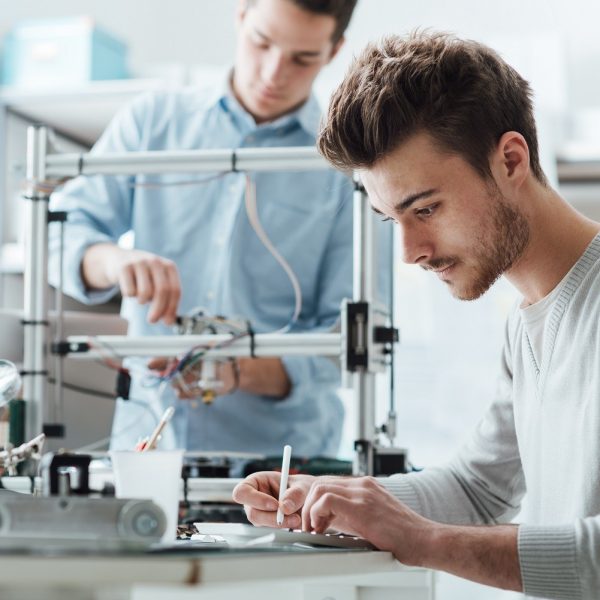Apple Voice Control Added

Apple has been at the forefront of built-in accessibility features since the initial launch of the iPad, and a recent announcement at the Worldwide Developer Conference proves that Apple is showing no signs of slowing down on the accessibility front. During the conference, it was announced that among the many tweaks and updates coming for iOS 13, a new accessibility feature would be added to the already impressive list of built-in accessibility features available for iOS.
Calendly

Calendars have been essential to human productivity and planning for thousands of years. As we’ve evolved as humans, we’ve seen calendars go from stone, to paper, to pixels on a tiny screen in our pockets. This shift in format and overall growth in technology is especially helpful for individuals with executive functioning and/or attention challenges who might otherwise find it extremely challenging to keep track of appointments, meetings, dates, etc. in a paper format. But, with that being said, mainstream digital calendars can sometimes be difficult to manage, particularly when scheduling multiple people across multiple time zones, which is often necessary in the business world. The app that we’re going to look at today seeks to simplify and streamline that process for every user, across virtually any email platform.
Transition N.B. Bursary

Thanks to a donation of $1000 from the TD Canada Trust of Fredericton, Ability New Brunswick is offering two $500 bursaries for youths living with a disability who are entering into post-secondary education. Applications must be received on or before June 21st, 2019.
iWordQ

iWordQ is one of our favorite and most often recommended apps for iPad. We often recommend it for students with learning disabilities who struggle with both reading and writing, because it performs both functions so well and is available at a fairly affordable price given what the app can do. In today’s e-bulletin, we’re going to break down the app’s two distinct “modes” and look at the features that are available in each.
ScanJig

In today’s e-bulletin, we’re going to look at a new device that supports Optical Character Recognition (OCR) technology. But first, what is OCR? Simply put, Optical Character Recognition (OCR) is a technology that allows users to convert physical documents into a digital format which can then be searched, edited and read aloud. Documents can be scanned using any smartphone, tablet, or iPad that has a built-in camera, and the necessary app(s). There are a wide variety of scanning apps available for free or for purchase, but some of our favorites include Office Lens, ClaroPDF, and PrizmoGo. What the means is that virtually all of us have the ability to scan and digitize physical documents using technology we likely already have.
OneNote Now Supports Apple 2 Pencil

OneNote has been one of our top-recommended note-taking apps for some time. The app offers many levels of organization, will instantly sync across all devices, and is packed with accessibility features such as dictation and immersive reader. Of course, this app is still evolving, and today we are going to look at yet another new feature which has recently been added to OneNote: Apple 2 pencil support.
3D Printing Class Being Offered for Free

The emergence of 3-D printing has caused a massive shift within the world of assistive technology. With 3-D printing, AT users now have the ability to design and manufacture their own assistive technology at a fraction of the cost of what’s available for purchase. Plus, this technology is open-sourced, which means that it can be openly created, refined, and shared for free online. 3-D printing is especially useful for manufacturing low-tech AT such as grips, assistive key turners, bag holders, etc. Of course, high-tech AT can also be manufactured via 3-D printer, with our own LipSync device being a great example of this. Such projects require a bit more knowledge and experience, but the online course that will be the subject of this weeks’ e-bulletin is designed for exactly that purpose.
AT or IT?

Even in the world of technology, there is sometimes some confusion when it comes to determining whether something is an IT (Information Technology) related issue or whether it is an AT (Assistive Technology) related issue. In today’s e-bulletin, we are going to look at the definitions of these two closely related concepts, and we’re also going to attempt to create some kind of road map to understand how to determine whether a technology-related issue should be considered AT, or whether it should be considered IT. This information is especially relevant for teachers and AT users who use our help desk, and the aim here is to provide AT users and teachers with a clearer picture of whether an issue should be brought to the IT department or handled by an AT specialist.
Voice Dream Reader Adds OCR

Known for its realistic voices and ease of use, Voice Dream Reader has been among our top choices for text-to-speech apps for some time. The app supports most document formats including DAISY, EPUB, and most commercial eBook platforms, features a wide range of voices and languages, and even gives users access to a wide range of tools and reading styles. The app is also designed to be fully accessible, and is optimized for Voice Over, Braille, and switch control. For low vision readers, high contrast and large font size options are available.
Everyday Accessible Technology Part 2

Earlier in the month, we looked at everyday accessible technology in the home, and we focused on the bedroom and the bathroom. To read that e-bulletin, click here. Today, we’re going to look at some accessible products that could (or should) be found in one’s kitchen. The products that we are looking at today were recommended by our colleague Nakia Singh, who lives independently with very low vision. These products were chosen because they are safe and relatively easy to use, making them a good choice for individuals who require accessible kitchen tools.



